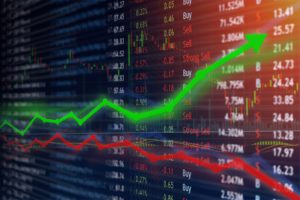
The National Commission for Energy, Housing and Utilities Services Regulation (NCER) has set a feed-in tariff for the ETG Solar 5 LLC solar plant with a capacity of 11.1 MW (Zhovti Vody, Dnipropetrovsk region) at a rate of 15.03 euro cents per kWh.
According to the NCER’s website, the commission made such a decision at a meeting on October 3.
The validity of the tariff is until January 1, 2030.
The commission also provided tariff for Dniproukrenergo LLC station with a capacity of 6.2 MW (Nova Kakhovka, Kherson region). The company is owned by Logos Firm LLC and Mykyta Hostev, who is the director of Dniproukrenergo.
In addition, feed-in tariff was given to Sunny City LLC with a capacity of 8.3 MW (Ivano-Frankivsk region). The company is owned by Sansolar LLC, Andromeda Industry LLC and Yevhen Yaremenko. The ultimate beneficiary is Andriy Havryliv.
The NCER also set the tariff for the second stage of Ternovytsia Solar LLC with a capacity of 15.5 MW (Ternovytsia, Lviv region). The company is owned by Vydobutok Plus LLC and Greenville closed non-diversified venture corporate investment fund. The ultimate beneficiary is Ivan Torsky.
ETG Solar 5 LLC is owned by Energy Trade Group LLC, the largest private gas supplier to Ukraine. The ultimate beneficiary is Oleksiy Bondarenko. The number of clients of Energy Trade Group at the beginning of 2019 exceeded 2,500 companies.
ETG, GAS, SOLAR PLANT, TARIFF, TRADER

The Antimonopoly Committee of Ukraine (AMC) is considering the issue of permits to Devisal Limited (Nicosia, Cyprus), owned by Ukrainian businessman Sergiy Tigipko, to buy shares in Wesla Investments Limited (the British Virgin Islands).
According to the AMC’s agenda, the deal will provide Devisal Limited with over 50% of the voting shares on the board of Wesla Investments.
According to the unified state register, Wesla Investments Limited is the only participant with a 100% share in the charter capital of Veon Plus LLC (Kyiv), which is the owner of Radisson Blu Hotel in Podil. The ultimate beneficiary of the company as of October 3 is Moldovan citizen Victor Garaba.
Until June 2016, according to the state register, the ultimate beneficiary of Veon Plus LLC was Russian citizen Sergey Kovalev.
As reported, with reference to the CMS legal group, the transaction for the purchase of Radisson Blu Hotel in Podil by Sergiy Tigipko was completed in 2016, its cost amounted to EUR 9.2 million.

Pivdenny seaport in September 2019 handled 1.628 million tonnes of cargo, which exceeds the target by 75.1% and 59% more (604,000 tonnes) than in September 2018.
According to the press service of the port, the enterprise handled 1.213 million tonnes of ore, while imports of coking coal amounted to 195,400 tonnes, steam coal some 110,700 tonnes.
In addition, the stevedore transshipped 55,100 tonnes of pig iron and 32,000 tonnes of imported mineral fertilizers.
The berths operated by the company accepted 21 vessels and 18,400 high-sided wagons.
“At the end of October, we plan to fulfill the annual plan. However, there is no time to stop. In October, we are preparing to accept about 1.5 million tonnes of cargo,” acting director of the port Anatoliy Yablunivsky said.
Pivdenny port was founded in 1978. It is the deepest one in Ukraine. The total length of the berths is about 2.6 km.

The Dobrobut medical chain and the Boris clinic have launched the merged emergency medical aid service via the merged dispatch service.
The chain said in a press release that the merged emergency medical aid service will have 20 teams. A team meeting the specifics of the call and located closer to the site will arrive at the site.
The merged service park includes mobile intensive care units, specialized teams to assist newborns and children, as well as vehicles that allow patients to be transported any distance throughout Ukraine and beyond.
The integration of emergency services is the first step in integrating the Boris clinic into the Dobrobut medical network, which acquired 100% of the clinic in 2019.

The international hotel operator Accor (France) has signed a management contract for the Swissotel Living hotel at 13 Luteranska Street in Pechersky district of Kyiv, the opening of which is scheduled for 2021-2022. “This will be an aparthotel designed for long and medium-term accommodation (extended stay). The owner of the hotel and Accor believe that this format has good prospects in the city,” Accor New East Europe Development Director Yekateryna Marchenko told Interfax-Ukraine.
The object will be housed in a historic building near Khreschatyk Street, after restoration it will have 58 rooms.
The expert noted that before joining the Accor chain, the Swissotel brand already made attempts to enter the Ukrainian hotel market, but the planned projects were not implemented.
Accor Group is one of the leading hotel operators in the world. It opened its first hotel under the Novotel brand in Lille (France) in 1967.

Mass investment of the public in government and other securities in Ukraine would be possible only in two or three years after building the required market infrastructure, CEO of Freedom Holding Timur Turlov has said, based on the experience of operation in Kazakhstan. “In the next two to three years, we will be focused on building our infrastructure, so that we now have hundreds of thousands of people who will invest in government securities,” he said at the Expert Talk meeting organized by the European Business Association (EBA) on Wednesday.
Turlov expressed the hope that over this period, investors will accumulate experience and confidence in the securities market, and they will increase interest in risks. In his opinion, this will make it possible to bring not only domestic government loan bonds to the market, but also other more risky, but also more profitable tools.
“For the development of the market, big initiative and sufficiently long and significant investments of market players are important for the appearance of infrastructure,” Turlov said. He added that investing in investor education and financial literacy is also needed.
Based on the positive experience of entering the securities market in Kazakhstan, he said that such a retail business could cost billions of U.S. dollars in the next five or seven years, but a long planning horizon is required to build it.
Freedom Holding Corporation is an international financial holding company registered in Nevada (the United States), which shares will start trading on October 15 at NASDAQ.